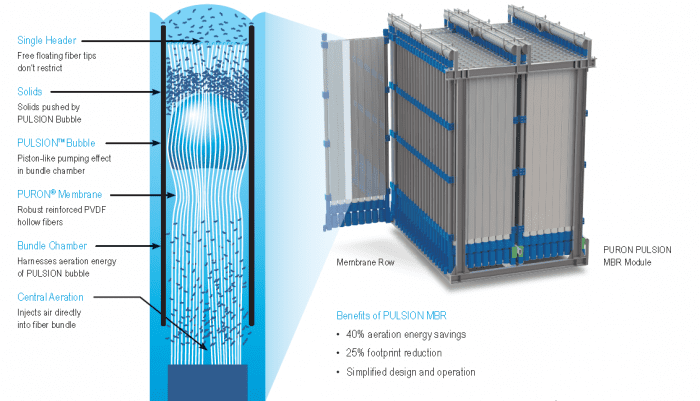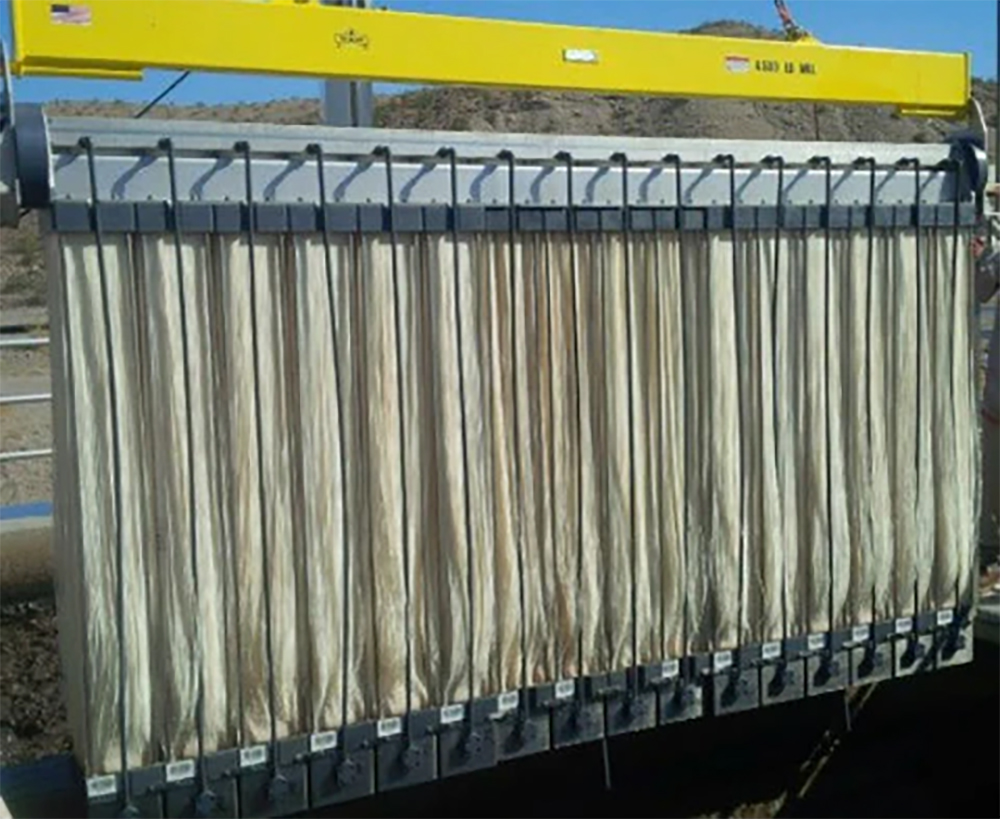Understanding the Basics of Membrane Bioreactor Systems for Wastewater Management
Understanding the Basics of Membrane Bioreactor Systems for Wastewater Management
Blog Article
How Membrane Layer Bioreactors Are Reinventing Water Filtration Systems
The introduction of membrane bioreactors (MBRs) represents a significant improvement in the area of water purification, merging organic treatment processes with sophisticated membrane filtering technologies. This assimilation not only improves the top quality of treated effluent however additionally addresses metropolitan room constraints, making MBRs especially ideal for densely inhabited locations. As global water shortage escalates, the duty of MBRs in promoting drinkable water reuse and lasting water management ends up being significantly vital. The effects of this technology extend beyond effectiveness-- what possibilities and obstacles exist in advance for its widespread application?
Review of Membrane Layer Bioreactors
Membrane layer bioreactors (MBRs) stand for a considerable improvement in water purification technology, as they incorporate biological therapy procedures with membrane filtration. This integration boosts the effectiveness of wastewater therapy by using microorganisms to break down natural toxins while all at once utilizing semi-permeable membranes to separate cured water from suspended solids and pathogens.
The MBR system commonly contains a biological reactor where the microbial populace metabolizes contaminants, adhered to by a membrane filtering unit that preserves biomass and enables just clean water to pass through. This double performance causes greater effluent quality contrasted to conventional therapy techniques. MBRs can be operated in both set and continuous circulation settings, providing flexibility in layout and application.
Furthermore, MBRs are identified by their small impact, making them suitable for city settings with room constraints. Membrane Bioreactor. They additionally enable the healing of water for reuse, hence adding to water sustainability campaigns. While MBR technology has actually gotten appeal in metropolitan and commercial applications, its operational complexities and power needs necessitate mindful factor to consider during execution. In general, MBRs are at the center of boosting water treatment effectiveness and top quality, showcasing the potential for ingenious options in ecological management.
Benefits of MBR Modern Technology
The assimilation of organic therapy with membrane filtering uses countless benefits for water filtration procedures. Among the key benefits of Membrane layer Bioreactor (MBR) modern technology is its capacity to successfully get rid of both not natural and natural impurities, causing premium effluent. The membrane layers function as a physical obstacle, stopping put on hold solids and microorganisms from going through, which boosts the total security and dependability of treated water.
Additionally, MBR systems call for a smaller footprint contrasted to standard treatment methods, enabling more efficient space application. This portable style is particularly advantageous in city setups where land is restricted. MBRs likewise demonstrate functional versatility, fitting varying influent qualities and circulation rates without significant efficiency deterioration.
Additionally, the procedure offers boosted nutrient removal capabilities, specifically for nitrogen and phosphorus, which are vital for avoiding eutrophication in getting waters. The reduced sludge manufacturing related to MBR technology likewise translates to reduce disposal costs, making it an affordable option in the long run - Membrane Bioreactor. On the whole, the benefits of MBR technology placement it as a leading selection for ingenious and lasting water purification systems, dealing with both ecological and economic worries
Applications in Water Purification
Applications of Membrane Bioreactor (MBR) modern technology in water purification are impactful and diverse, resolving various therapy requires across several sectors. MBRs properly combine organic therapy processes with membrane filtering, making them perfect for metropolitan wastewater treatment, industrial effluent monitoring, and also safe and clean water reuse campaigns.
In from this source community settings, MBRs are significantly utilized to enhance the quality of treated wastewater, enabling for conformity with strict discharge guidelines and helping with the recycling of water for watering and non-potable usages. Their small style likewise makes them suitable for metropolitan atmospheres where area is limited.
Industrially, MBR innovation is used to treat process water and wastewater, particularly in sectors such as food and beverage, pharmaceuticals, and fabrics. By properly getting rid of contaminants and suspended solids, MBRs aid industries reduce environmental impacts while recouping important resources from wastewater streams.
Additionally, MBRs are getting traction in decentralized water treatment applications, where small-scale systems can be released in remote locations or establishing areas. This flexibility enables communities to attain lasting water administration remedies, boosting accessibility to clean water while minimizing reliance on standard treatment techniques.
Case Studies and Success Stories

In another instance, a fabric manufacturing facility in Bangladesh took on MBR modern technology to address its wastewater challenges. The system lowered chemical oxygen need (COD) degrees from 1,200 mg/L to less than 100 mg/L, hence satisfying governing criteria and dramatically reducing ecological impact.
The College of Cape Town's MBR setup has actually confirmed efficient in dealing with greywater for non-potable reuse on school. This task not only saves safe and clean water but additionally offers as an educational design for sustainable methods.
Moreover, a fish and shellfish processing plant in Norway used MBR technology to treat effluents consisting of high levels of natural matter, accomplishing over 90% pollutant removal. These situation studies emphasize MBR modern technology's flexibility and its vital duty in improving water high quality across diverse applications.
Future of Water Treatment Solutions
As international water scarcity and contamination difficulties intensify, ingenious water treatment options are coming to be increasingly important to make certain lasting accessibility to tidy water. The future of water therapy exists in the integration of advanced technologies that my company enhance the performance and performance of filtration procedures. Membrane layer bioreactors (MBRs) go to the center of this advancement, incorporating biological treatment with membrane purification to generate high-quality effluent suitable for various applications.

Arising patterns such as resource recovery from wastewater, consisting of nutrients and power, will additionally transform treatment centers right into environment-friendly hubs. Additionally, developments in nanotechnology and membrane products assure enhanced performance and long life see it here of purification systems.

Final Thought
Their duty in potable water reuse and sustainable water administration highlights their relevance in dealing with worldwide water deficiency obstacles. Continued research and advancement will certainly further enhance the effectiveness and fostering of MBR modern technology, ensuring a resilient future for water treatment services.
The introduction of membrane layer bioreactors (MBRs) stands for a significant development in the field of water purification, merging biological treatment processes with advanced membrane layer purification modern technologies. As international water deficiency magnifies, the role of MBRs in promoting safe and clean water reuse and lasting water administration comes to be progressively essential. They additionally make it possible for the recuperation of water for reuse, therefore contributing to water sustainability initiatives.As global water scarcity and pollution obstacles intensify, cutting-edge water therapy options are ending up being progressively important to make sure sustainable access to tidy water. Their duty in drinkable water reuse and sustainable water management highlights their relevance in resolving worldwide water shortage difficulties.
Report this page